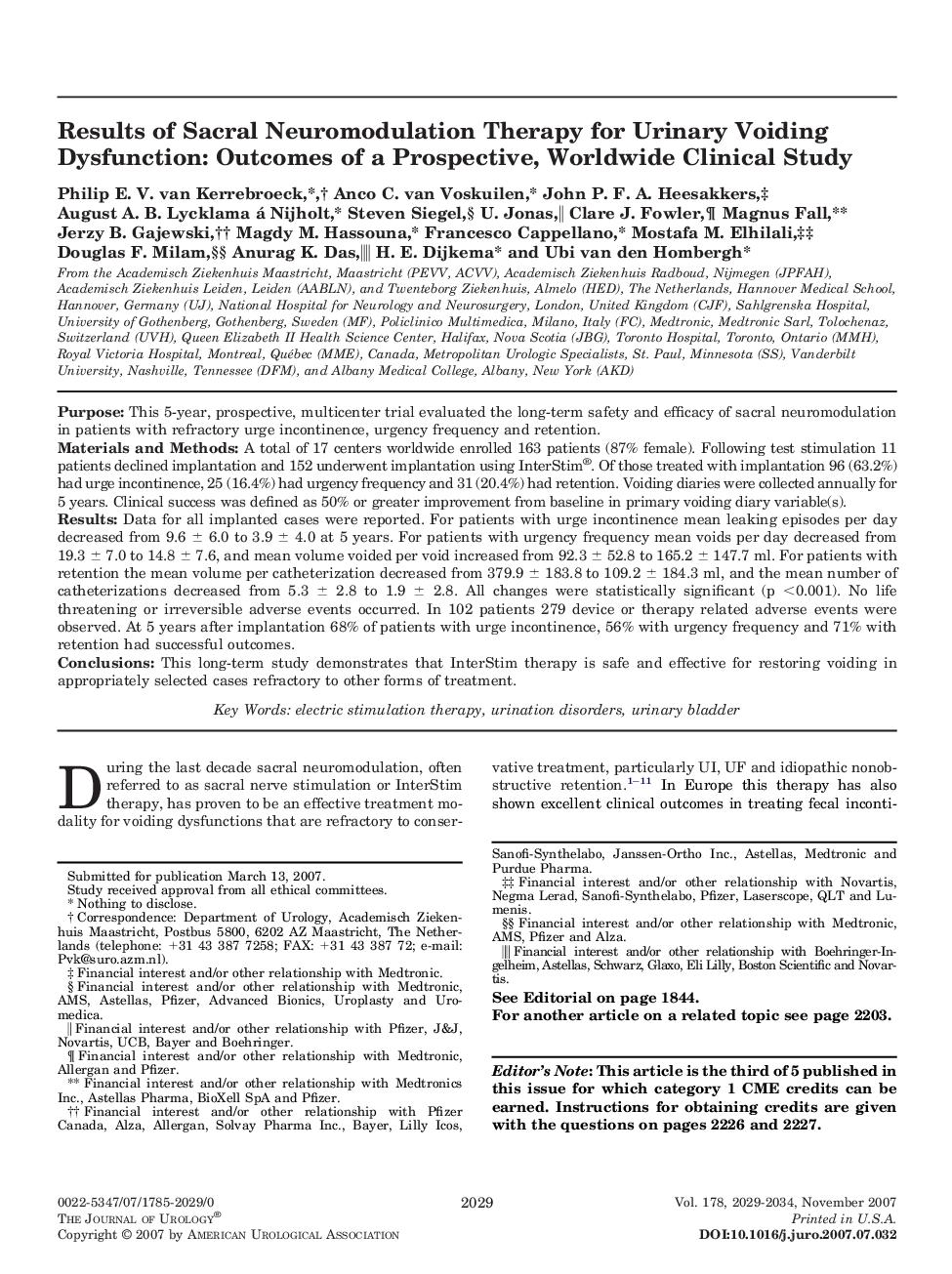| کد مقاله | کد نشریه | سال انتشار | مقاله انگلیسی | نسخه تمام متن |
|---|---|---|---|---|
| 3873256 | 1599001 | 2007 | 6 صفحه PDF | دانلود رایگان |

PurposeThis 5-year, prospective, multicenter trial evaluated the long-term safety and efficacy of sacral neuromodulation in patients with refractory urge incontinence, urgency frequency and retention.Materials and MethodsA total of 17 centers worldwide enrolled 163 patients (87% female). Following test stimulation 11 patients declined implantation and 152 underwent implantation using InterStim®. Of those treated with implantation 96 (63.2%) had urge incontinence, 25 (16.4%) had urgency frequency and 31 (20.4%) had retention. Voiding diaries were collected annually for 5 years. Clinical success was defined as 50% or greater improvement from baseline in primary voiding diary variable(s).ResultsData for all implanted cases were reported. For patients with urge incontinence mean leaking episodes per day decreased from 9.6 ± 6.0 to 3.9 ± 4.0 at 5 years. For patients with urgency frequency mean voids per day decreased from 19.3 ± 7.0 to 14.8 ± 7.6, and mean volume voided per void increased from 92.3 ± 52.8 to 165.2 ± 147.7 ml. For patients with retention the mean volume per catheterization decreased from 379.9 ± 183.8 to 109.2 ± 184.3 ml, and the mean number of catheterizations decreased from 5.3 ± 2.8 to 1.9 ± 2.8. All changes were statistically significant (p <0.001). No life threatening or irreversible adverse events occurred. In 102 patients 279 device or therapy related adverse events were observed. At 5 years after implantation 68% of patients with urge incontinence, 56% with urgency frequency and 71% with retention had successful outcomes.ConclusionsThis long-term study demonstrates that InterStim therapy is safe and effective for restoring voiding in appropriately selected cases refractory to other forms of treatment.
Journal: The Journal of Urology - Volume 178, Issue 5, November 2007, Pages 2029–2034